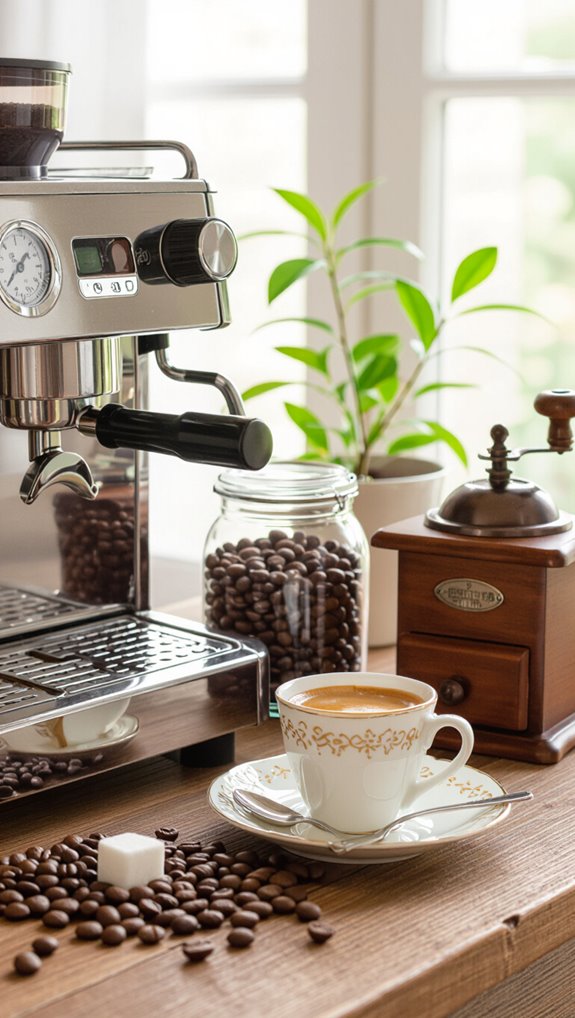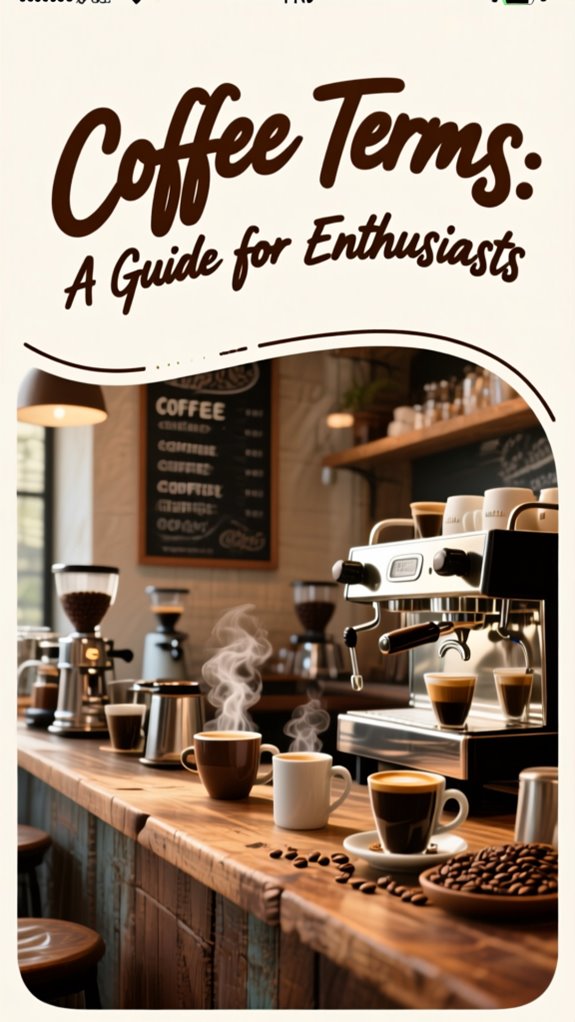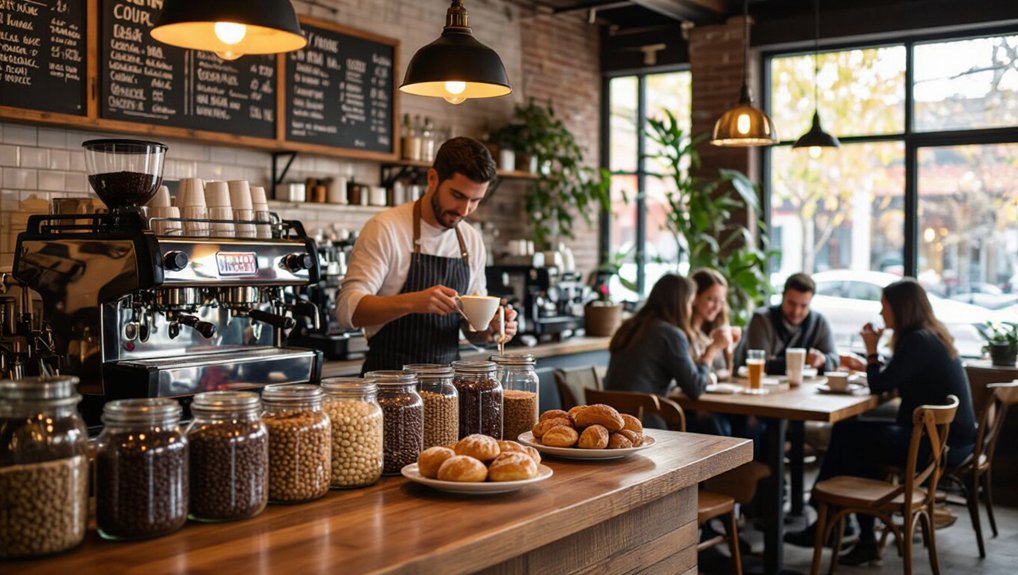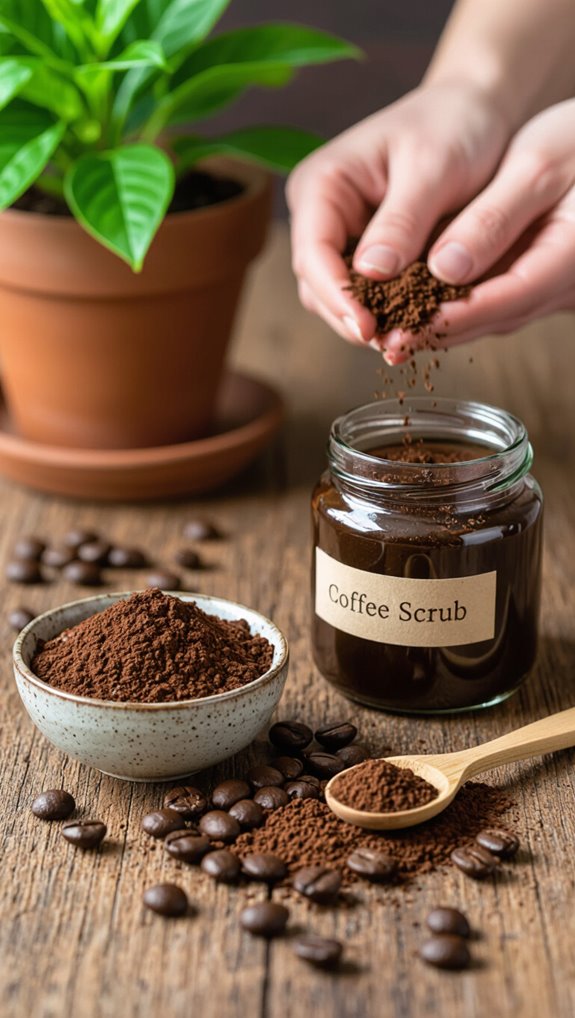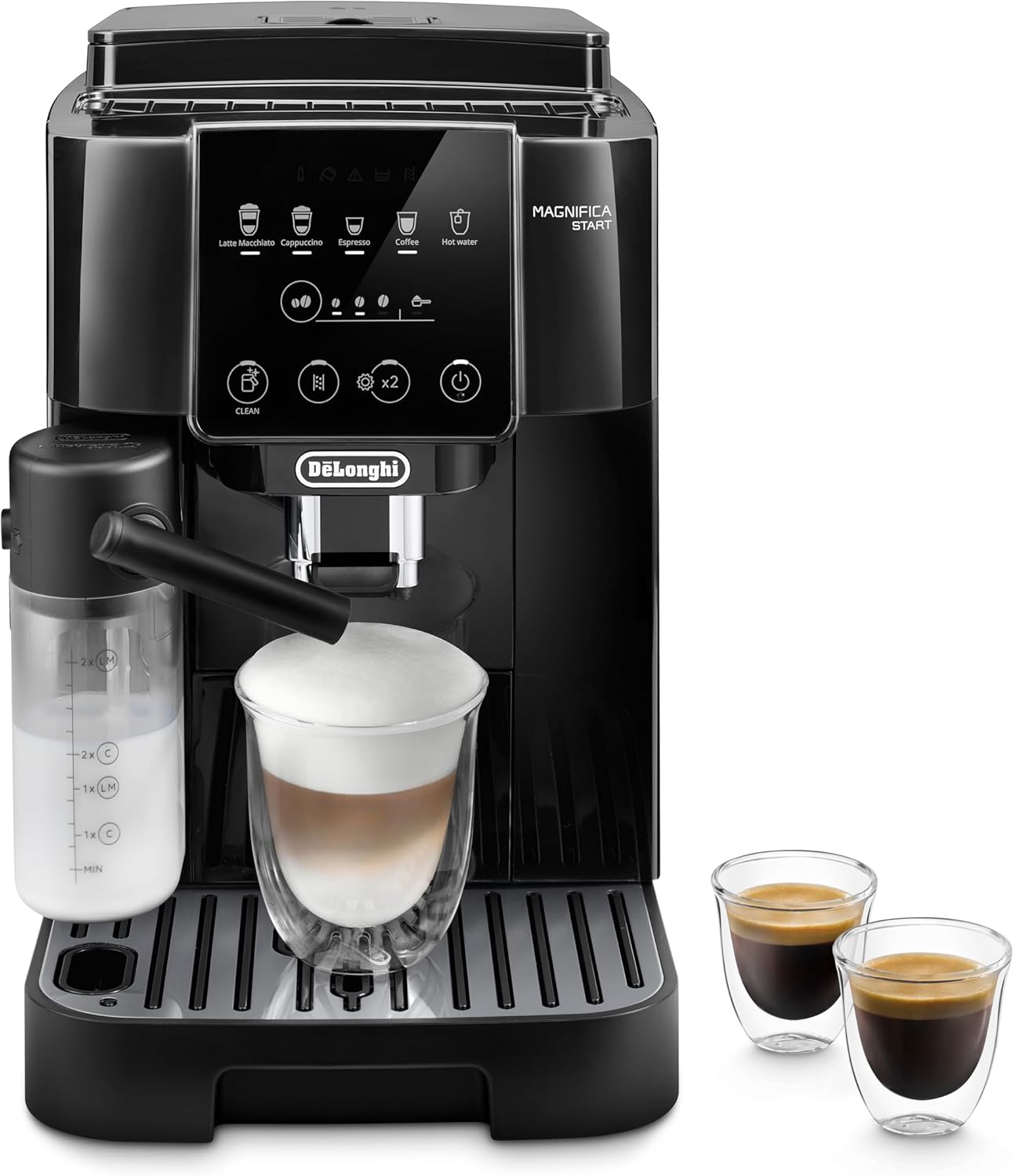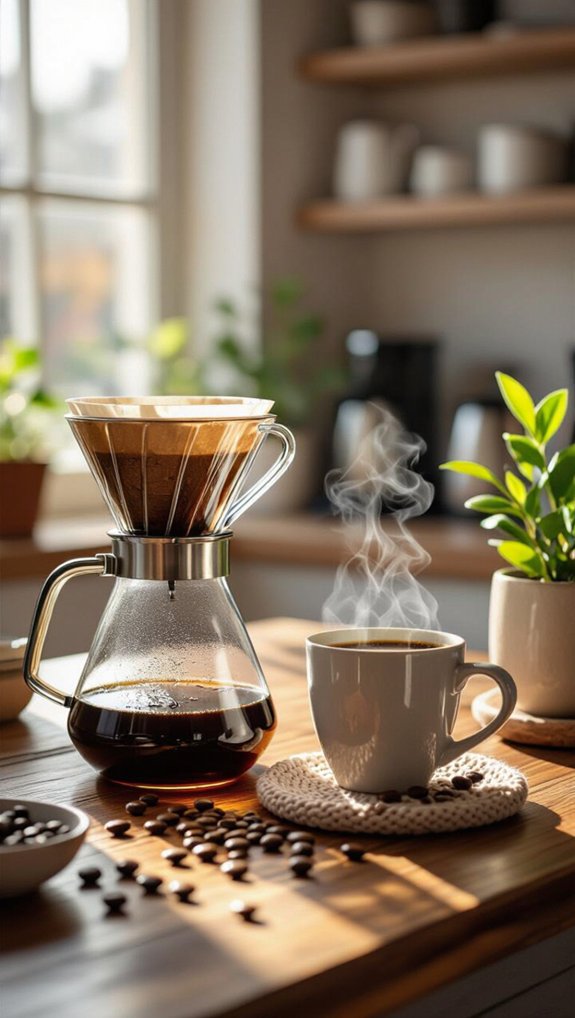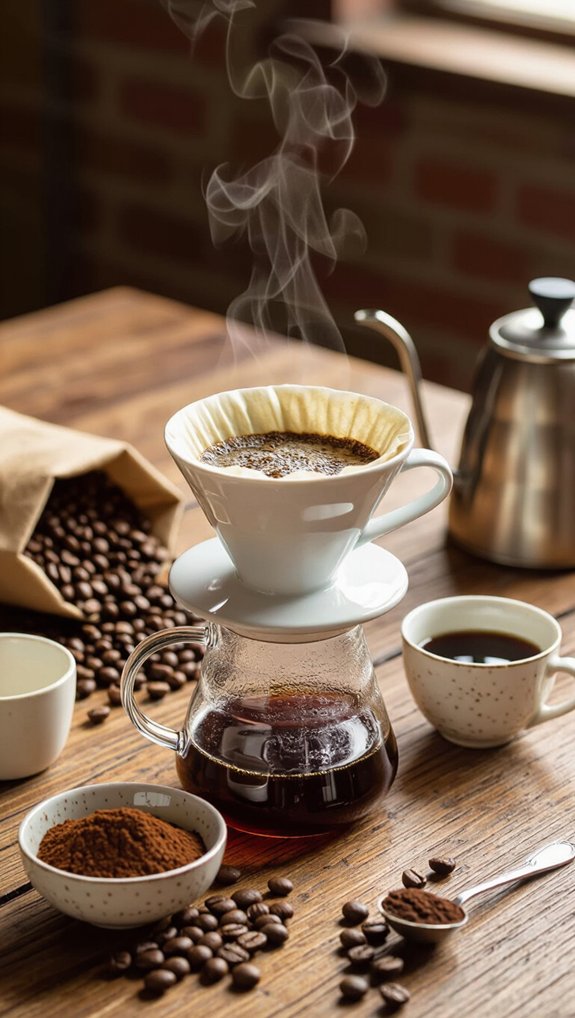Ever wondered what your barista means when they mention “crema” or “bloom”? You’re not alone. Coffee terminology can feel like learning a new language, leaving many enthusiasts nodding along without truly understanding what makes their morning brew special.
This guide breaks down the essential coffee terms every enthusiast should know. From bean varietals and roast profiles to brewing methods and flavor descriptors, you’ll discover the vocabulary that unlocks a deeper appreciation for coffee. Whether you’re ordering at a specialty café or experimenting with home brewing, these terms will help you make informed choices and communicate exactly what you want in your cup.
Table of Contents
What are the most common coffee terms
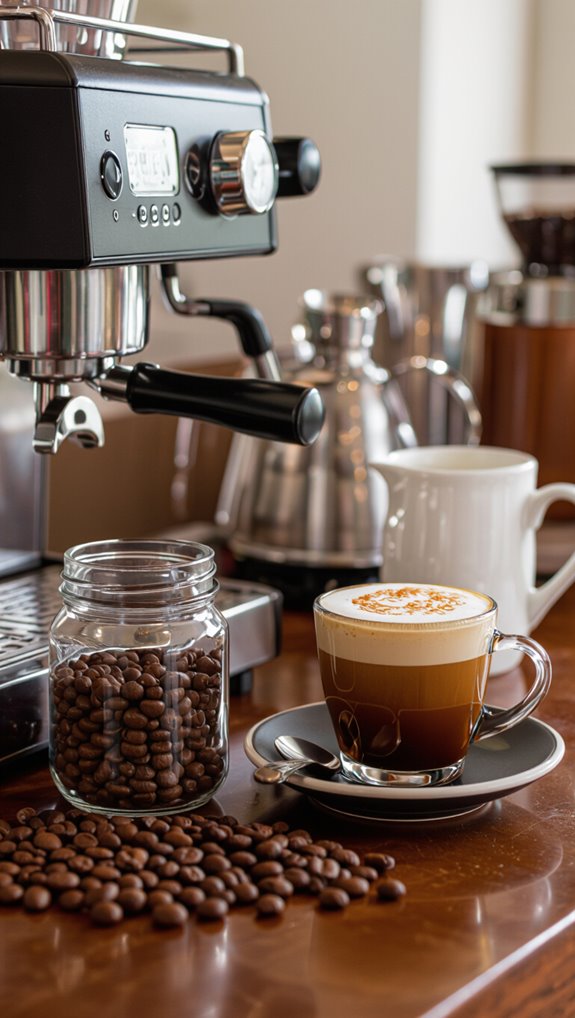
Brewing brilliance starts with grasping coffee’s rich vocabulary. From bean types like Arabica and Robusta to brewing methods such as espresso and French press, comprehension key terms elevates your coffee experience. Green coffee beans, the raw unroasted seeds of coffee cherries, offer a fascinating starting point for understanding coffee’s complex production process.
Flavor profiles matter too – think acidity, body, and aroma. Grinding techniques play a crucial role; burr grinders offer more consistent results than blade grinders.
Whether you’re exploring estate-grown beans or experimenting with blends, knowing these terms transforms you from casual sipper to confident coffee enthusiast. Your journey into the world of coffee begins with language that captures its complexity and craft.
Essential coffee terms every coffee lover knows
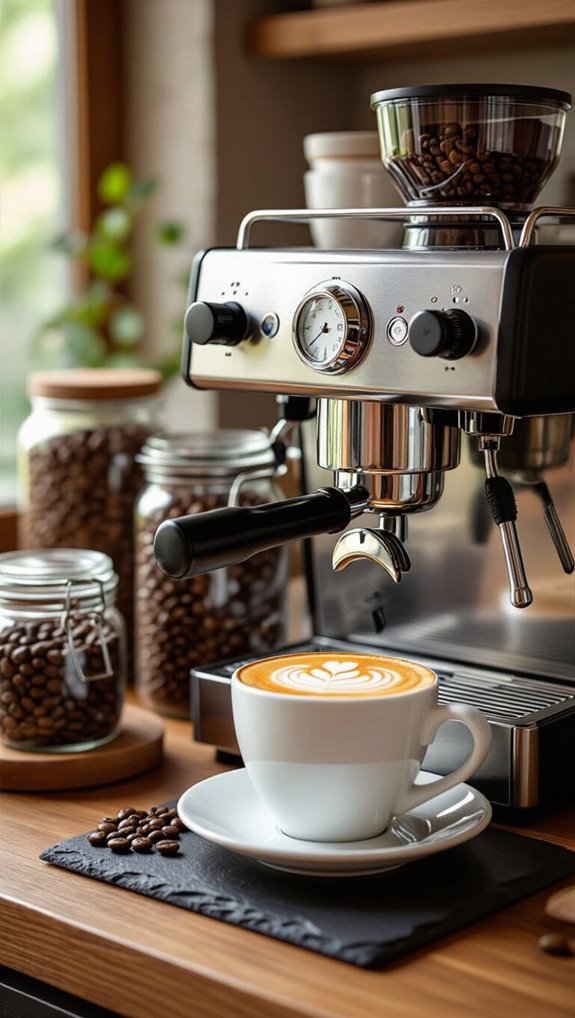
Coffee enthusiasts know that mastering key terminology transforms casual sipping into a rich, informed experience. Comprehending terms like espresso—a concentrated brew forced through finely ground beans—helps appreciate the craft behind every cup.
Flavor profiles reveal coffee’s complexity, from earthy Indonesian varieties to bright, acidic blends. Knowing roast levels, from light to dark, empowers you to select beans matching your taste preferences.
Brewing methods like French press or grasping equipment such as burr grinders elevate your coffee knowledge from novice to connoisseur, making each sip a journey of discovery and appreciation. Specialty coffee, constituting only about 10% of global coffee supply, represents the pinnacle of quality and craftsmanship in the coffee world.
Coffee brewing and preparation terms explained
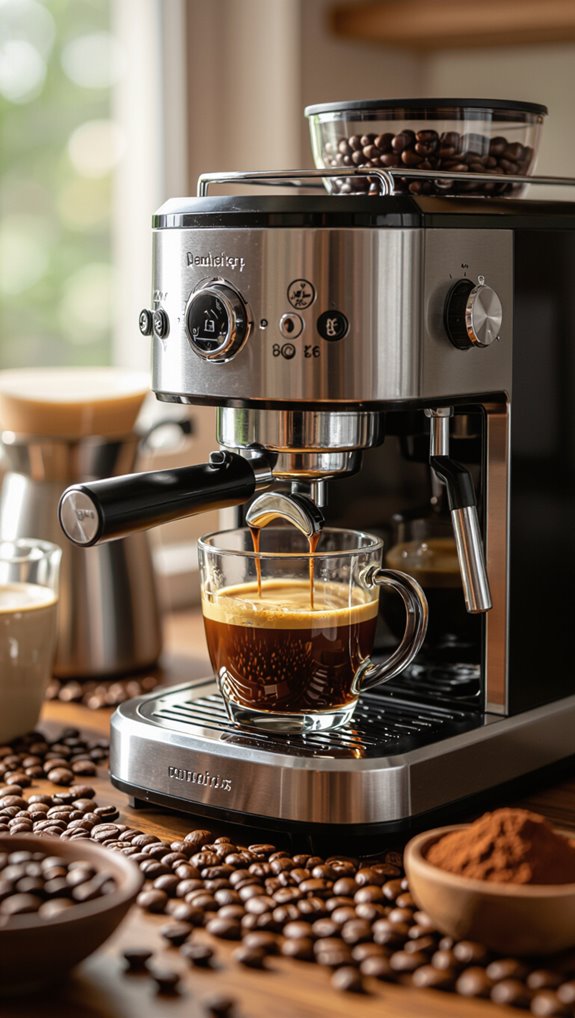
At the heart of every exceptional cup lies the art and science of brewing, transforming humble coffee beans into a symphony of flavor and aroma. Brewing categories like drip and immersion fundamentally shape the extraction process and final taste profile.
Brewing methods like AeroPress, French Press, and Pour-Over each offer unique taste experiences. Water temperature (between 195°F and 205°F), grind size, and steeping time dramatically influence your coffee’s character.
Whether you prefer a rich French Press brew or a delicate Siphon extraction, grasping these variables is key. Experimenting with different techniques lets you unlock nuanced flavors, turning your morning ritual into a personalized sensory journey.
Coffee bean and roasting terms simplified
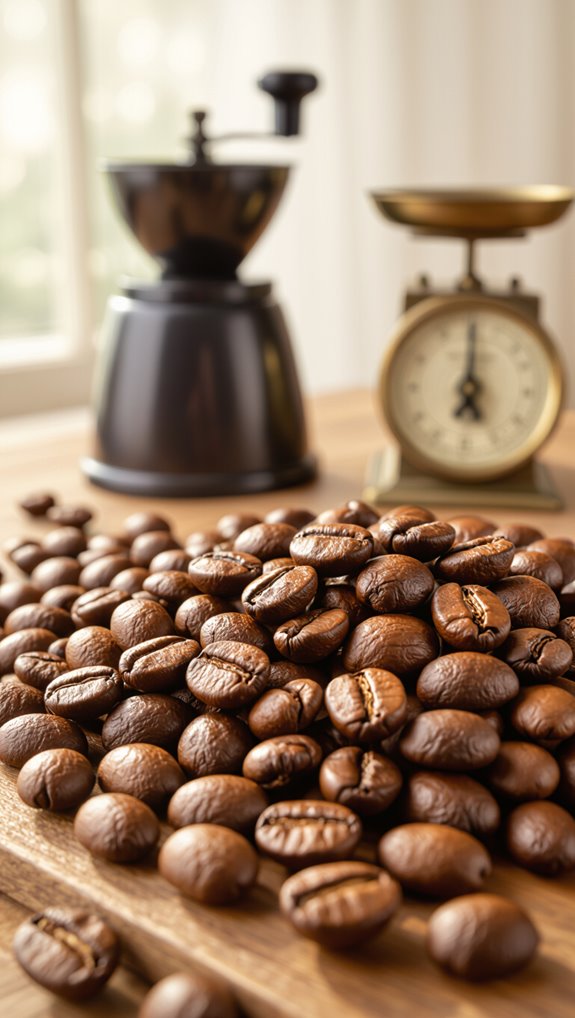
The magic of coffee begins long before brewing—it starts with grasping the beans and the transformative roasting process. Arabica and Robusta are the two primary coffee bean types, each offering unique flavor profiles. Arabica dominates global production with its smooth, sweet notes, while Robusta brings a stronger, harsher taste.
Roasting is where beans truly come alive. During this heat treatment, over 1,000 flavor compounds emerge, creating distinctive taste signatures. The “first crack” signals the bean’s initial transformation, and the “second crack” indicates a darker, more intense roast. Comprehension of these nuances elevates your coffee experience from ordinary to extraordinary.
Popular coffee drinks and their terminology
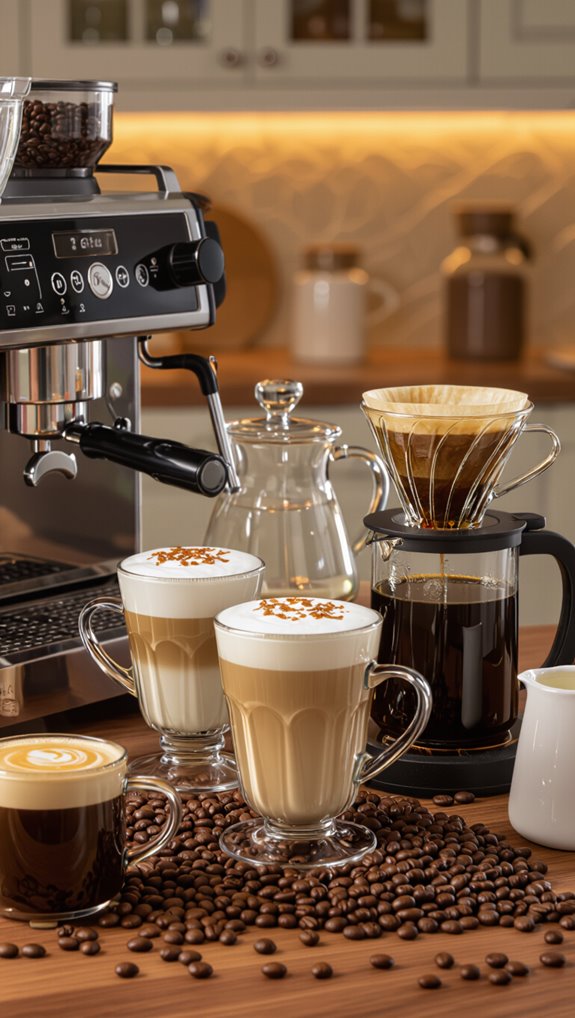
Let’s dive into the world of coffee drinks that’ll transform your morning routine from mundane to extraordinary. Coffee lovers, get ready to explore a universe of flavor and technique:
- Espresso Classics: From rich cappuccinos to smooth lattes, these foundational drinks define coffee culture
- Milk Variations: Discover how steamed milk transforms espresso into creamy masterpieces
- Sweet Specialties: Mochas and caramel macchiatos add delightful sweetness to your brew
- Global Influences: Each drink tells a story of cultural coffee traditions
Whether you’re a casual sipper or aspiring home barista, grasping these drinks will elevate your coffee experience from ordinary to extraordinary.
Coffee flavor and tasting terms you need
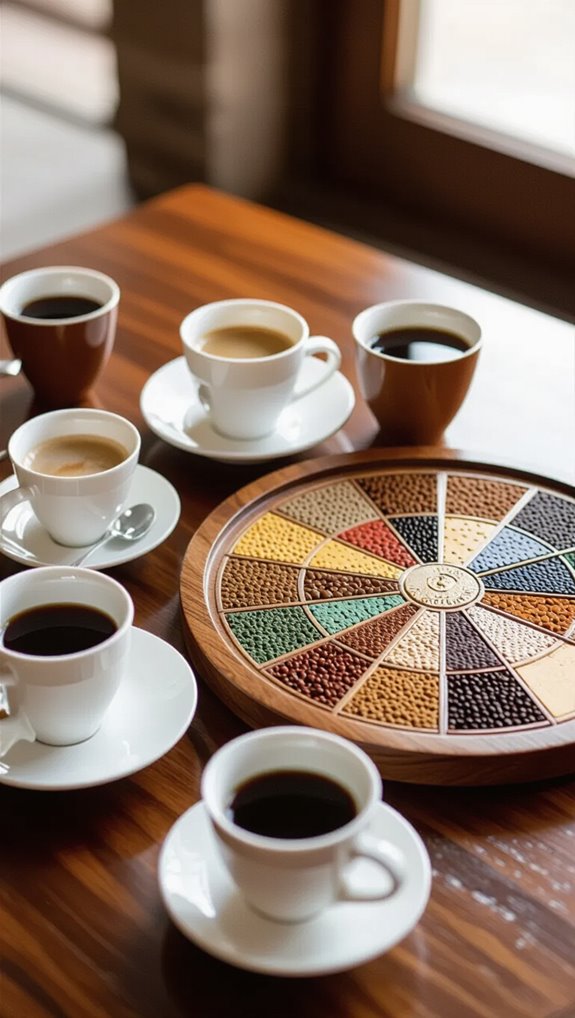
After mastering popular coffee drinks, it’s time to sharpen your coffee tasting skills by grasping the language of flavor. The Specialty Coffee Association’s flavor wheel is your roadmap to comprehending coffee’s complex sensory landscape. Think of it like a sommelier’s wine guide, but for coffee lovers.
Key flavor components include sweetness (like honey), acidity (bright citrus notes), and body (that silky mouthfeel). Professional tasters decode nuanced descriptors from chocolatey and fruity to floral and earthy. These terms aren’t just fancy talk—they’re precise language revealing a coffee’s unique character and quality.
Processing and origin terms in coffee
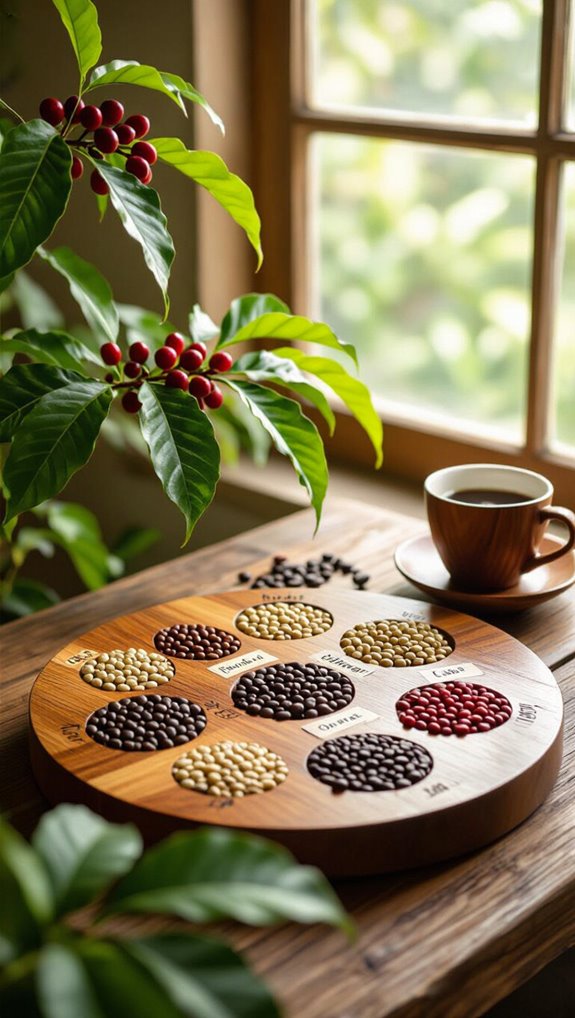
While coffee processing might sound technical, it’s the behind-the-scenes magic that transforms humble coffee cherries into the complex, flavorful brew you love. Processing methods dramatically influence your coffee’s taste, reflecting regional traditions and environmental conditions. Let’s break down the key aspects:
- Wet processing removes fruit using water, creating bright, clean flavors
- Natural processing dries cherries whole, developing intense fruity notes
- Different regions like Ethiopia and Indonesia have unique processing styles
- Processing impacts body, acidity, and overall flavor profile
Understanding these techniques helps you appreciate the intricate journey from cherry to cup, revealing why each sip tells a rich, nuanced story.
Specialty coffee terms and grading explained
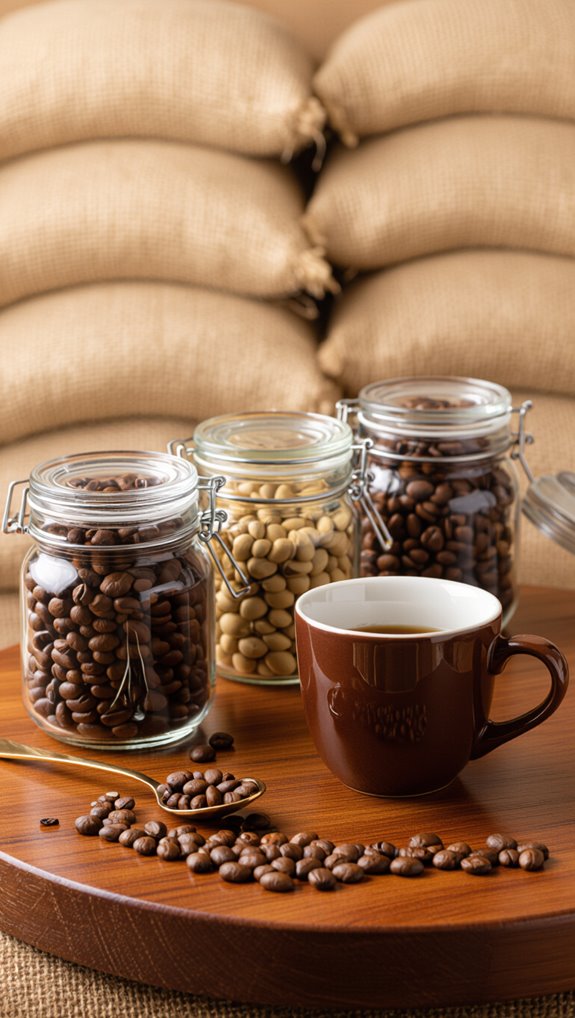
When diving into the world of specialty coffee, grasping its grading system becomes crucial for discerning what truly sets exceptional coffee apart. The Specialty Coffee Association (SCA) uses a 100-point scale to evaluate coffee quality, with specialty grades starting at 80 points. Rigorous criteria assess everything from physical bean characteristics to sensory experiences.
| Score Range | Grade | Description |
|---|---|---|
| 90-100 | Outstanding | Exceptional quality |
| 85-89.99 | Excellent | Superior characteristics |
| 80-84.99 | Very Good | Specialty grade |
| 70-79 | Premium | Good flavor |
Top-tier coffees undergo meticulous evaluation, ensuring only the most remarkable beans earn the coveted specialty coffee designation.
Coffee equipment terms for better brewing
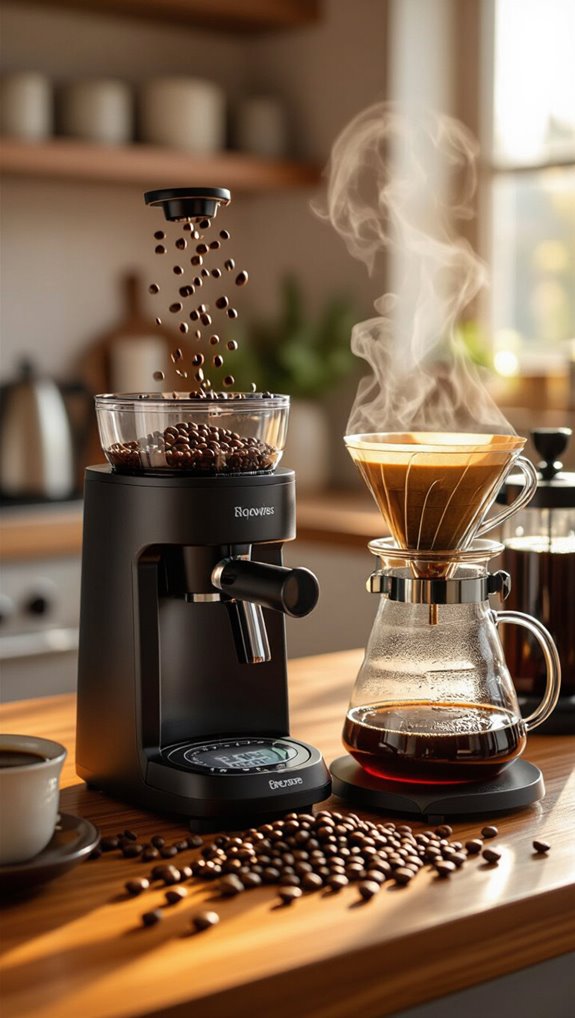
Unlock the secrets of brewing better coffee by mastering essential equipment terminology that transforms your home coffee experience. Grasping your brewing tools isn’t just technical—it’s the path to crafting perfect cups that rival professional cafes.
- Group head: Where espresso magic happens, connecting portafilter to machine
- Steam wand: Your milk-frothing companion for creamy lattes and cappuccinos
- Pressure gauge: A critical indicator of brewing precision and extraction quality
- Burr grinders: The key to uniform coffee grounds and consistent flavor profiles
Knowing these terms empowers you to elevate your brewing game from amateur to confident home barista.
Coffee shop slang that baristas use daily
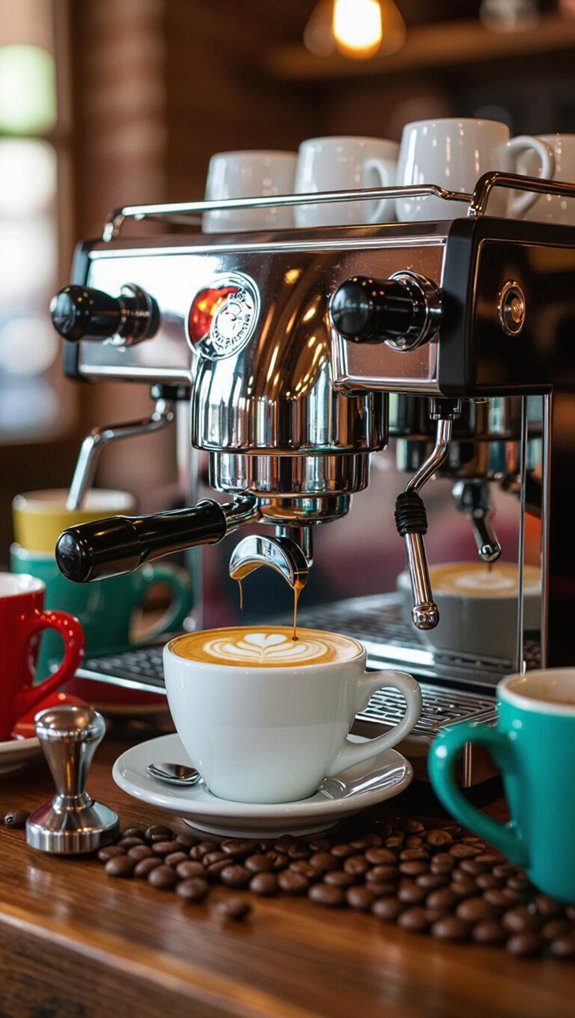
Step into the buzzing world of coffee shops, and you’ll quickly discover a unique language that baristas use to communicate efficiently and passionately about their craft.
“Pull a shot” means extracting espresso, while “blonde” refers to a lighter roast. Baristas might ask for a “doppio” (double shot) or warn about “channeling” during brewing.
A “puck” is the spent coffee grounds, and “crema” describes that golden-brown foam topping a perfect espresso.
When someone orders a “breve,” they’re requesting a rich, creamy drink made with half-and-half instead of milk. These insider terms transform coffee preparation into an art form.
Frequently Asked Questions
How Much Caffeine Is Actually in Different Types of Coffee?
I’ll break it down for you: drip coffee packs 95-165 mg per cup, espresso hits 63-65 mg per shot, cold brew delivers 155-240 mg, and instant coffee ranges from 60-80 mg in an 8 oz serving.
Can Coffee Really Help Improve My Mental Focus and Productivity?
Yes, coffee can definitely boost my mental focus and productivity! Caffeine enhances alertness, improves executive function, and helps me stay sharp, especially during tasks requiring concentration and quick cognitive processing.
Is Drinking Coffee Daily Harmful to My Overall Health and Wellbeing?
Based on extensive research, drinking coffee daily isn’t harmful. In fact, moderate consumption can lower risks of cardiovascular disease, diabetes, and certain cancers while potentially boosting cognitive function and overall wellness.
What’s the Best Time of Day to Drink Coffee?
I recommend drinking coffee between 9:30-11 a.m., after breakfast, when your cortisol levels dip. This timing maximizes caffeine’s benefits, enhances alertness, and avoids potential metabolic disruptions from early morning or late-day consumption.
How Does Coffee’s Temperature Affect Its Taste and Brewing Quality?
Coffee’s temperature dramatically influences its taste. I’ve learned that brewing between 86-96°C extracts the best flavors, while drinking around 82-85°C reveals complex notes without burning my tongue. Temperature isn’t just heat—it’s a flavor conductor.
In Conclusion
Understanding coffee terms enriches every aspect of your coffee experience, from selecting beans to perfecting your brewing technique. When you know what everything means—from “crema” to “cupping” to “single-origin”—you can make informed choices that align with your taste preferences and brewing style. This knowledge empowers you to communicate confidently with baristas, experiment with new methods, and truly appreciate the nuances in every cup.
Whether you’re wondering what coffee terms every enthusiast should know or simply looking to deepen your appreciation for your morning ritual, mastering this vocabulary opens doors to a more rewarding coffee journey. As you explore different brewing methods and flavor profiles, having the right equipment makes all the difference. Check out our coffee machine reviews to discover smart, well-reviewed options that match your newfound expertise and help you brew café-quality coffee at home.

